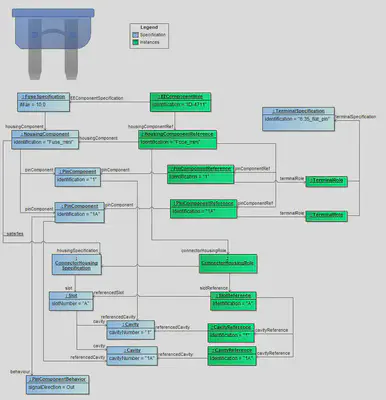Fuses

A single fuse is a two-terminal component that can be plugged or screwed into a compatible fuse slot. There are different types, which differ in their geometry, the type of connection, the tripping characteristics and their rated voltage.
In VEC a fuse is handled as a EE-Component and that is why the FuseSpecification extends the EEComponentSpecification and describes it’s the available connector interface also with a HousingComponent and - in this case - with two PinComponents. The FuseSpecification defines the typical component attributes, i.e. the maximum electric current information for the fuse.
In addition to that the geometrical structure is described by a ConnectorHousingSpecification with it’s Slots and their Cavities (Cavity ). The PinComponents can be described in a more detailed way by usage of the PinComponentBehavior. Special information about the signal, signal direction or voltage can be placed here.
The PinComponent can reference a TerminalSpecification to define the physical properties of the pin. To avoid the confusion by too many crossing lines, the connection t the TermnalSpecification is not explicitly drawn in the diagram above.
Instantiating fuses
Instantiating fuses is like instantiating any other EE-Component. A EEComponentRole under a PartOccurrence references the FuseSpecification and all structure elements underneath will be instantiated and references their corresponding part master element, too. For more information see E/E-Components.